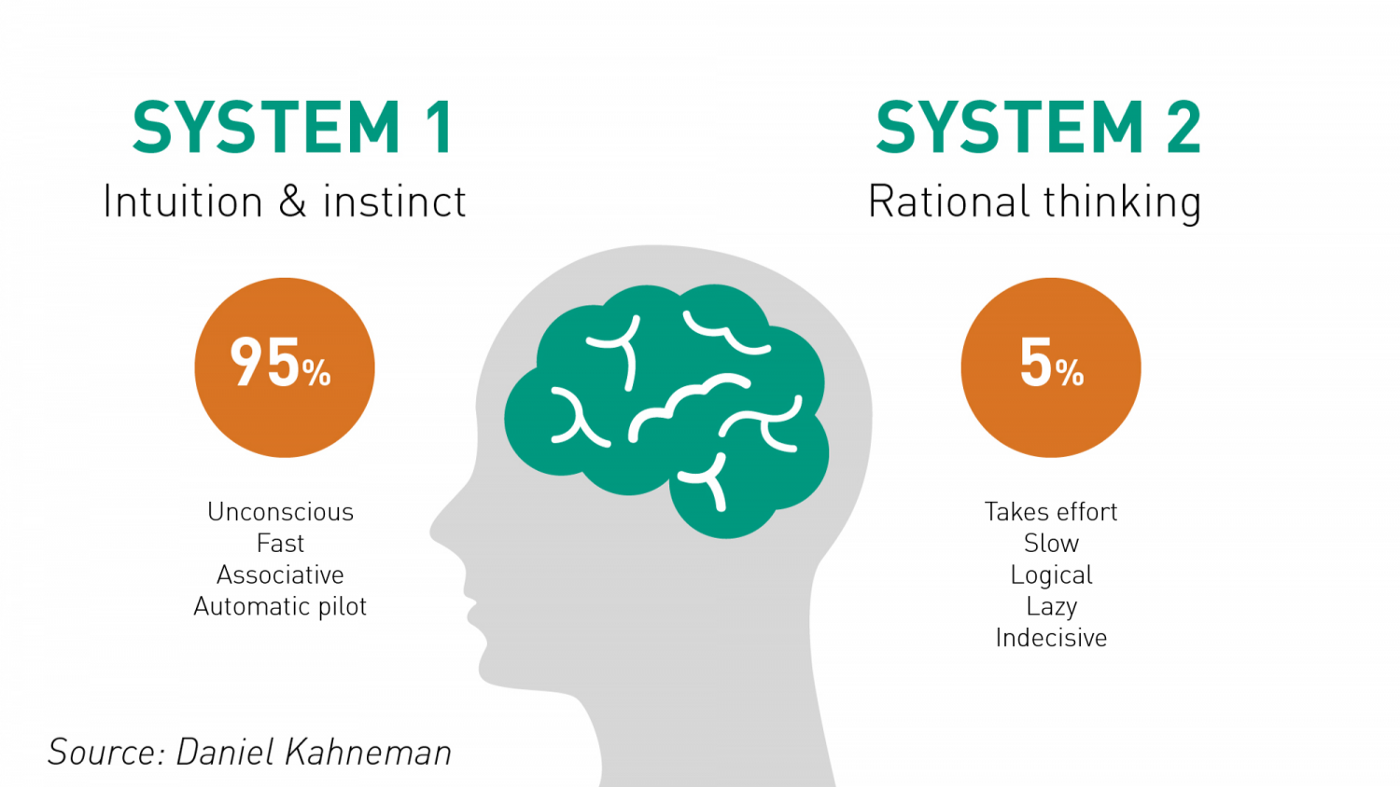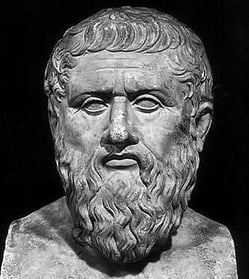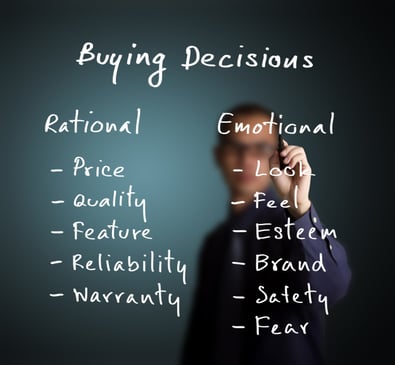

J&C Blog
Find all the latest marketing trends on the J&C Blog.

Find all the latest marketing trends on the J&C Blog.
With hundreds and hundreds of decisions to make every hour, how do humans ever get through the day?
Well, it comes down to System 1 and System 2 thinking.
For example, if a speeding taxi were racing toward you as you stepped off the curb, you’d jump back. No thinking involved.
Or maybe it’s something more subtle, like noticing the facial cues of an angry boss. Either way, in these types of situations, your thinking is automatic. That's called System 1 – and it’s a far cry from the more deliberate kind of thinking you do when you’re asked to work through an algebra problem, assemble some new furniture, or do your taxes — the long-form. That’s System 2 thinking.
The idea that we use two systems to process information was detailed by Daniel Kahneman in his best-selling book, Thinking Fast and Slow.
And this concept is directly related to marketing and how consumers arrive at a purchase/no-purchase decision?
Harvard Business School professor Gerald Zatman sheds some light on the topic, too. He agrees with Kahneman that 95% of our purchase decisions take place subconsciously (aka System 1).
So why do marketers continue to send messages directed at the consumer's System 2 brain?
You see these System 2 ads everywhere. The copy focuses on facts and figures… bits and bytes… speeds and fees… bits and megahertz??? You can hear the consumers now — “Stop making me think.” Neuroscientists agree that our conscious rational computational mind (System 2) plays only a minor role in decision making. 
The risk of providing all that feature, fact-rich information is that it just overwhelms consumers. It’s too much. They have enough to think about already (Where are my car keys??). Even if they do engage, all that thinking and all that reading, all those decisions, renders them actionless. A condition known as “analysis paralysis.”
Then why don’t more marketers target the emotional subconscious (System 1), the real decision maker?
If we really want to increase response — and reduce the number of “actionless,” consumers, shouldn’t we appeal to the intuitive/emotional side of the consumer’s brain rather than the rational/logical side? (Yes.) Then why aren’t we?

Here’s why
We humans, we marketers — tend to appeal to System 2 brains because, when we think of ourselves, we easily identify with our conscious rational mind. We find it really hard to believe that people would make decisions to spend their hard-earned money based on a feeling or an emotion. Besides, isn’t our emotional side irrational and irresponsible? It has to be, right? We’ve heard this idea since Plato’s time when he said that man is rational and our emotions simply interfere with rational decisions.
But emotional decisions aren’t bad decisions — and they aren’t irrational
With all the new research in this field, we now know more than ever about emotional decisions. Turns out, our unconscious decisions have some logic
of their own. They’re based on an empirical mental processing system that can process millions of bits of data without getting overloaded or “paralyzed.” Unlike our conscious mind, which tends to bottleneck easily (because it can only process 3-4 new bits of information at a time. That’s all the working memory we have.)
But what makes the emotional System 1, our unconscious, so brilliant is that it’s spent years and years — our whole lives, really — testing and learning from what’s worked for us and what hasn’t. It has evolved to a point where it can make decisions according to rules of thumb — a mnemonic if you will. It recognizes patterns it has seen before and can anticipate the most likely outcome. Best of all, it works most of the time, which is why “trusting your instinct” is usually pretty good advice.
Is there any proof that we make better emotional decisions?
If we believe that as much as 95% of consumers’ decisions take place unconsciously, why can’t we look back at past decisions and find concrete examples of good emotional decisions? Well, it’s a bit tricky, because our conscious mind will always come up with reasons to justify our unconscious decisions. And that helps maintain the illusion that System 2, the rational mind, is in charge.
So where does that leave us marketers…
Here's the takeaway – Appeal to the rational mind for simple sales and the intuitive mind for complex sales
Behavioral economics, choice architecture, and the science of decision-making are fields that are growing quickly. But more research needs to be done. In the meantime, there are some takeaways we can use right now to help our customers make better decisions.
For straightforward offers on simple products and services, present facts to the rational brain – System 2. For more complex, involved products and considered purchases, you want to tell a story to the emotional brain – System 1.
Here’s how to really trigger the emotional brain?
Another way to say all this is that people buy on emotion and justify with logic. But it’s important to note that a customer’s decision to buy is not completely based on emotion. An emotion is just the way the unconscious communicates its decision to the conscious mind — so it can justify the final decision. But if you want to really influence how a customer feels about your product or brand, you have to provide an experience that creates an emotion.
Experiential selling: Don’t deliberate – simulate
To help customers experience your product, you can share a customer story or testimonial. Studies have shown that a story activates the same area of the brain that processes sights, sounds, tastes, and movement.
When you use customer scenarios/stories, it helps readers “test drive” your product. It works the same
way flight simulators help train pilots. In fact, the shift in pilot training from books and manuals to simulators was one of the leading reasons that accidents (due to poor decision-making) declined by 71% in the 1990s.[1] And this system continually builds upon the process that the brain naturally uses, i.e., learning from experience.
So when you share your marketing message through a story or experience, it feels real to the reader. It’s the next best thing to “being there,” and trying out your product. It lets the consumer’s intuitive brain take your product out for a spin, and see, even feel, for themselves the value that only your product provides.
Compare that to staring at a page full of specs and speeds and facts and figures.
If you need help getting your marketing message right, Jacobs & Clevenger is here to help. For over 40 years, J&C has been helping businesses big and small achieve better performance from their marketing efforts. Whether you need messaging help or a full marketing plan get in touch today.
1 Susan P. Baker, Yandong Qiang, George W. Rebok, and Guohua Li, “Pilot Error in Air Carrier Mishaps: Longitudinal Trends Among 558 Reports, 1983–2002” Aviat Space Environ Med, Apr 3, 2009.
Topics: Personalization, Marketing Data
303 E Wacker Drive, Suite 2030
Chicago, IL 60601
Phone: 312-894-3000
Fax: 312-894-3005